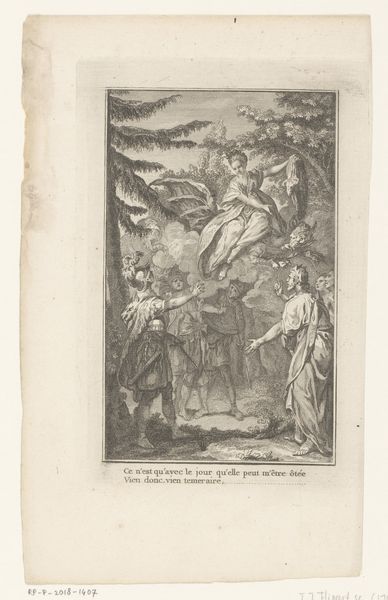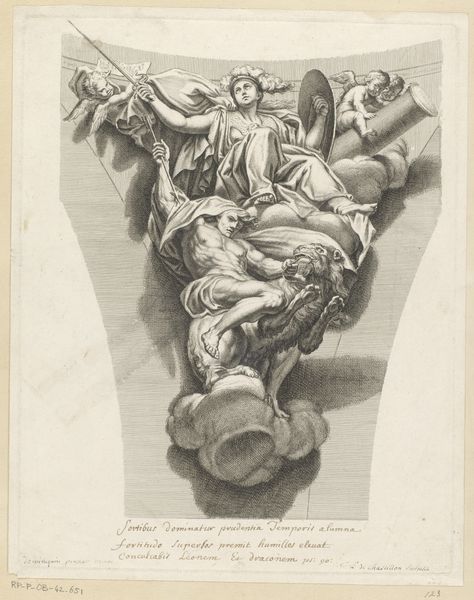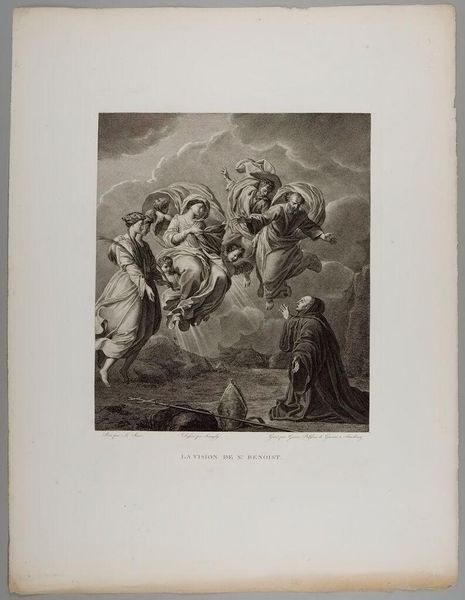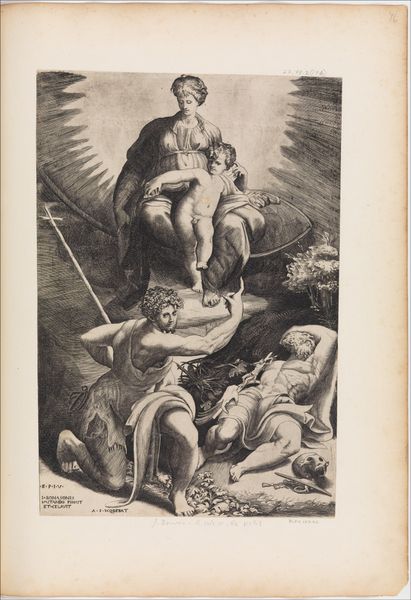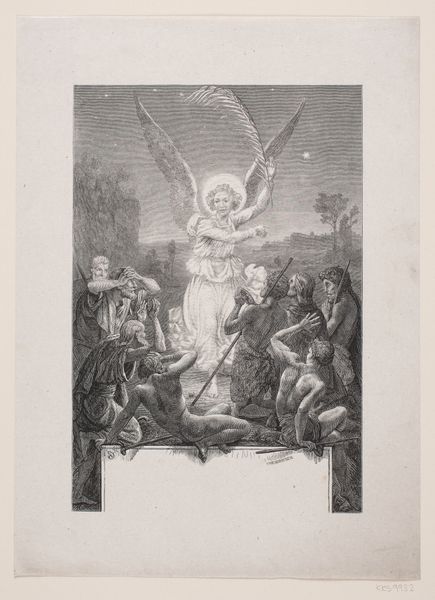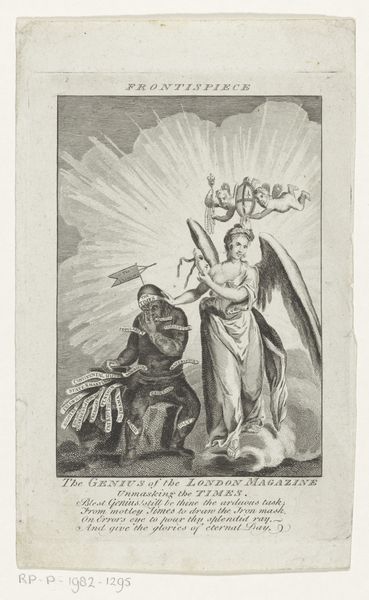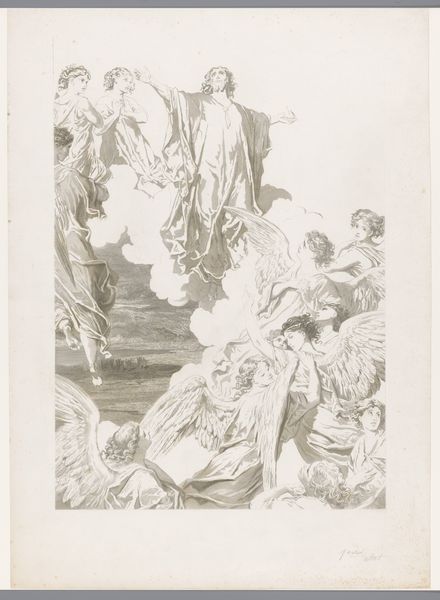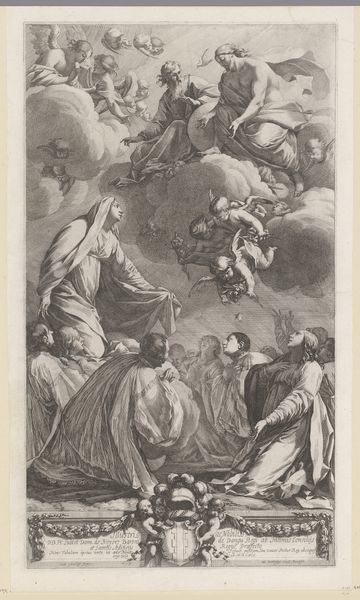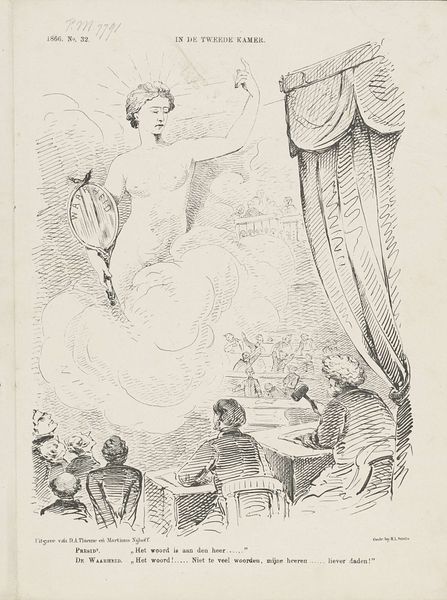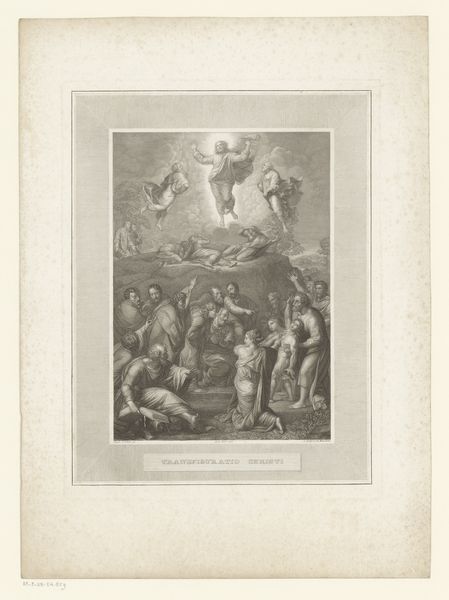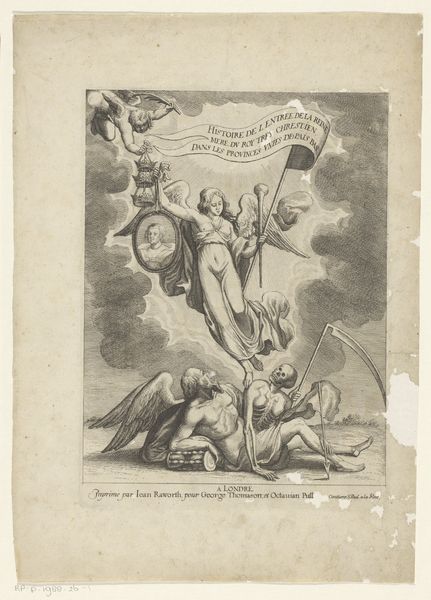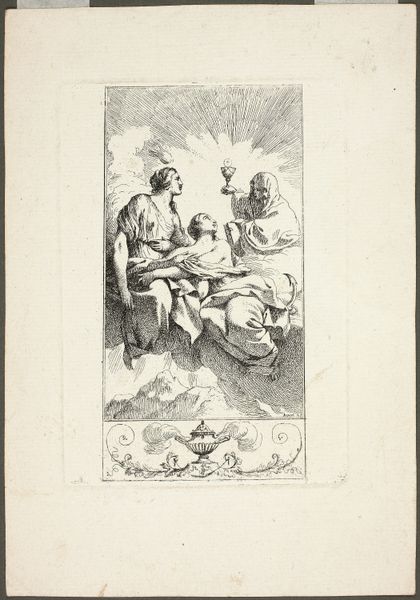
Manoach en zijn vrouw zien de engel in de vlam van hun offer opstijgen 1780
0:00
0:00
theodoorkoning
Rijksmuseum
Dimensions: height 233 mm, width 156 mm
Copyright: Rijks Museum: Open Domain
Curator: Here we have Theodoor Koning’s 1780 engraving, “Manoach en zijn vrouw zien de engel in de vlam van hun offer opstijgen,” which translates to "Manoah and his wife see the angel ascending in the flame of their sacrifice.” It's currently housed here at the Rijksmuseum. Editor: The emotional temperature here is almost feverish. I am really struck by how the materiality of the print amplifies the sense of otherworldly vision through a common item, easily reproducible with an ordinary printing press, using nothing more than ink. Curator: Indeed, it’s fascinating how Koning uses the linear quality of the engraving to convey both the divine and the earthly. Notice how the angel’s ascension echoes a similar upward movement in Baroque art representing spiritual transport, while the figures are reacting according to their gender and status. It mirrors accepted familial hierarchical order with the man positioned physically behind and dominant, and the woman is bowed in her subordinate state. Editor: I'm especially drawn to the domestic aspect captured. The sacrifice appears upon what resembles a simple stone kitchen surface; we even have some common kitchen items discarded on the ground to the side. By including such basic things, he emphasizes the real labor, the cost—in food, in time—of making something sacred from the commonplace. Curator: Right. Think about how depictions of angels as a whole reflect anxieties of connection, and what is revealed or concealed when a divine message meets humankind’s world of matter. This engraving creates meaning by layering symbolic language we can clearly understand because of familiar, quotidian scenes such as in the act of making a routine daily offering. Editor: Which forces a question: Who exactly *was* the intended consumer for prints like this? Mass-produced images were accessible to many but they had an educative mission of representing a historical event. It’s a fascinating intersection of faith, the marketplace, and knowledge distribution, all wrapped up in the lines of an engraving. Curator: Looking at it now, I appreciate anew the layering of visual vocabularies embedded here and how images themselves shape collective belief. Editor: Absolutely. Considering this work underscores for me that every act of artistic creation, even a relatively modest engraving, involves materials and actions inextricably woven into cultural narratives and contexts.
Comments
No comments
Be the first to comment and join the conversation on the ultimate creative platform.
